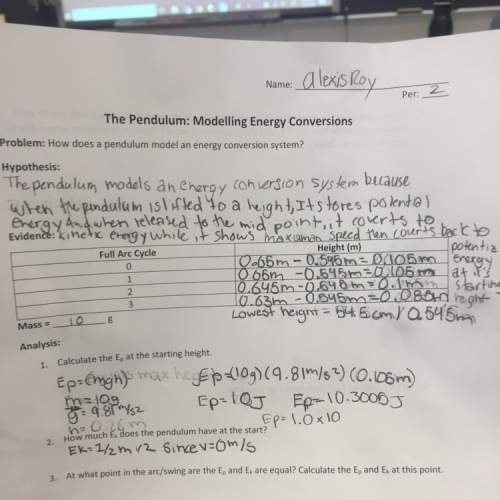
Physics, 21.11.2019 04:31, felipe9086
If a person of mass m simply moved forward with speed v, his kinetic energy would be 12mv2. however, in addition to possessing a forward motion, various parts of his body (such as the arms and legs) undergo rotation. therefore, his total kinetic energy is the sum of the energy from his forward motion plus the rotational kinetic energy of his arms and legs. the purpose of this problem is to see how much this rotational motion contributes to the person's kinetic energy. biomedical measurements show that the arms and hands together typically make up 13.0 % of a person's mass, while the legs and feet together account for 37.0 %. for a rough (but reasonable) calculation, we can model the arms and legs as thin uniform bars pivoting about the shoulder and hip, respectively. in a brisk walk, the arms and legs each move through an angle of about ±30∘ (a total of 60∘) from the vertical in approximately 1 second. we shall assume that they are held straight, rather than being bent, which is not quite true. let us consider a 79.0-kg person walking at 5.50 m/s having arms 68.0 cm long and legs 93.0 cm long.1-what is the average angular velocity of his arms and legs? 2-using the average angular velocity from part a, calculate the amount of rotational kinetic energy in this person's arms and legs as he walks.3-what is the total kinetic energy due to both his forward motion and his rotation? 4-what percentage of his kinetic energy is due to the rotation of his legs and arms?

Answers: 2
Other questions on the subject: Physics

Physics, 21.06.2019 17:40, duncanje5783
Which is not a source of noise pollution? a)airplanes b)acid rain c)machines d)cars
Answers: 2

Physics, 22.06.2019 02:30, JOEFRESH10
Which of the following are properties of mechanical waves? check all that apply ⭕️ particles of the medium move back and fourth, but do not move with the wave. ⭕️ the particles of the medium always move parallel to the wave motion. ⭕️ wave motion begins with a disturbance in the medium. ⭕️ waves transport energy from a source outward, away from the source.
Answers: 2

Physics, 22.06.2019 17:30, herbal420medici
Ethanol has a heat of vaporization of 38.56 kj/mol and a normal boiling point of 78.4 c. what is the vapor pressure of ethanol at 14 c?
Answers: 3

Physics, 22.06.2019 19:30, u8p4
Water is siphoned from a large tank and discharges into the atmosphere through a 50-mm diameter tube. the end of the tube is b = 2.6 m below the tank bottom which is a = 6.7 m deep, and viscous effects are negligible. determine the maximum height h over which the water can be siphoned without cavitation occurring. atmospheric pressure is 101.4 kpa, and the water vapor pressure is 1.79 kpa (absolute). report your answer in meters to two decimal places.
Answers: 1
Do you know the correct answer?
If a person of mass m simply moved forward with speed v, his kinetic energy would be 12mv2. however,...
Questions in other subjects:


Mathematics, 09.11.2020 20:10

Geography, 09.11.2020 20:10

Mathematics, 09.11.2020 20:10


Medicine, 09.11.2020 20:10

English, 09.11.2020 20:10


Biology, 09.11.2020 20:10








